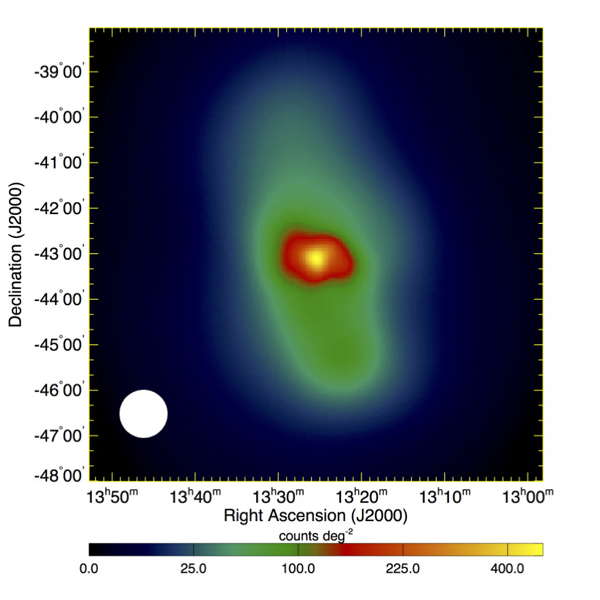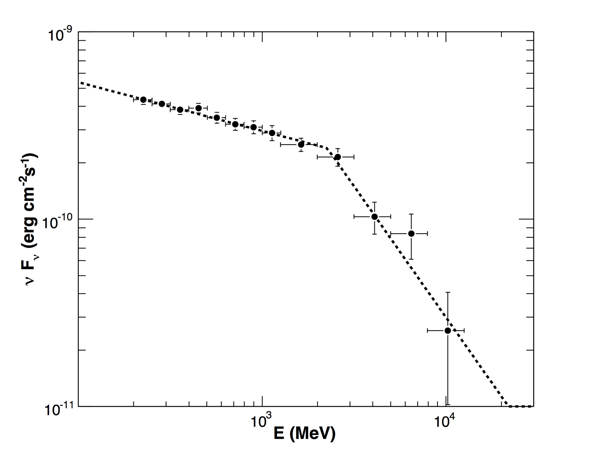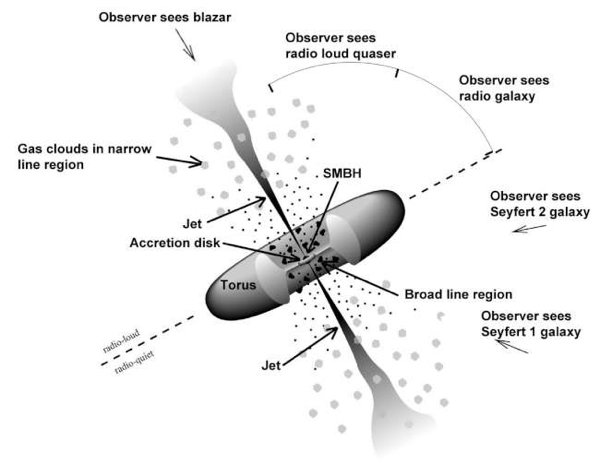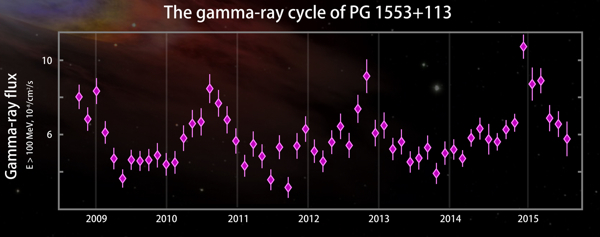Exploring Active Galactic Nuclei
Active Galactic Nuclei (AGN) are galaxies with extremely bright centers, powered by accretion onto supermassive black holes (SMBH). Some of these black holes accelerate relativistic bipolar jets of ejected material to speeds near the speed of light, which stretch up to hundreds of kiloparsecs outside the host galaxies. AGN with jets that are coincidentally pointed at the Earth are extremely bright at all wavelengths, from radio to gamma rays, due to Doppler beaming. These types of AGN are known as blazars.
Unified Model of AGN
The "zoo" of AGN with different names can be thought of as variations on a basic theme: the central power comes from accretion onto a SMBH, but what can be seen depends on the orientation of the observer with respect to the accretion disk, the dusty torus, and the jet, as shown in the illustration here. Most of the AGN seen with Fermi are blazars.
New Insights into AGN Physics from Fermi
Where do the gamma-rays come from?
The extremely bright, rapid increase in gamma rays from blazars makes many astrophysicists think they originate from a small region of the jet, within the Broad Line Region. However, some of the flares seem to be associated with the ejection components from the core that move very near the speed of light, as seen in very-long baseline interferometric radio images, as well as increases in the radio flux and rapid changes in polarization. This indicates the gamma-rays are coming from a region 1 to 10 pc away from the black hole, outside the BLR. How such a huge amount of energy can be transported this far from the central engine is a mystery.

AGN detected with the LAT
The Large Area Telescope (LAT) on board the Fermi Gamma Ray Space Telescope observes gamma rays in the 20 MeV to greater than 300 GeV band. Fifty-seven percent of all the sources Fermi-LAT has detected, and almost all the gamma-ray sources from outside the Milky Way, are blazars. The Third LAT AGN Catalog contains 1563 gamma-ray sources associated with AGN. The angular resolution of gamma-ray telescopes is not as fine as at other wavebands, but of these 1563 sources, 1444 are associated with AGN with a very high confidence. This is the largest catalog of gamma-ray detected AGN ever made.
This high-confidence sample contains non-blazars as well, including 13 misaligned blazars (radio galaxies), 5 narrow-line Seyfert 1 galaxies, and two starburst galaxies. These unexpected detections challenge the standard AGN unification scenarios, and could lead to new breakthroughs. Blazars are highly variable on timescales as short as hours and even minutes. The extragalactic gamma-ray sky never looks the same two days in a row. This makes the all-sky coverage of the LAT a valuable tool for studying these objects. + Learn More
Where are the high energy photons?
One unexpected discovery of Fermi is that many blazars have spectral breaks at around a few GeV. The reason for these spectral breaks remains a mystery.

Possible periodicity in a gamma-ray blazar?
With the long, continuous observations possible with Fermi, at least one blazar appears to show periodic variability. Among the possible explanations, the most intriguing is that this blazar could be a binary system of two SMBHs. + Learn More




